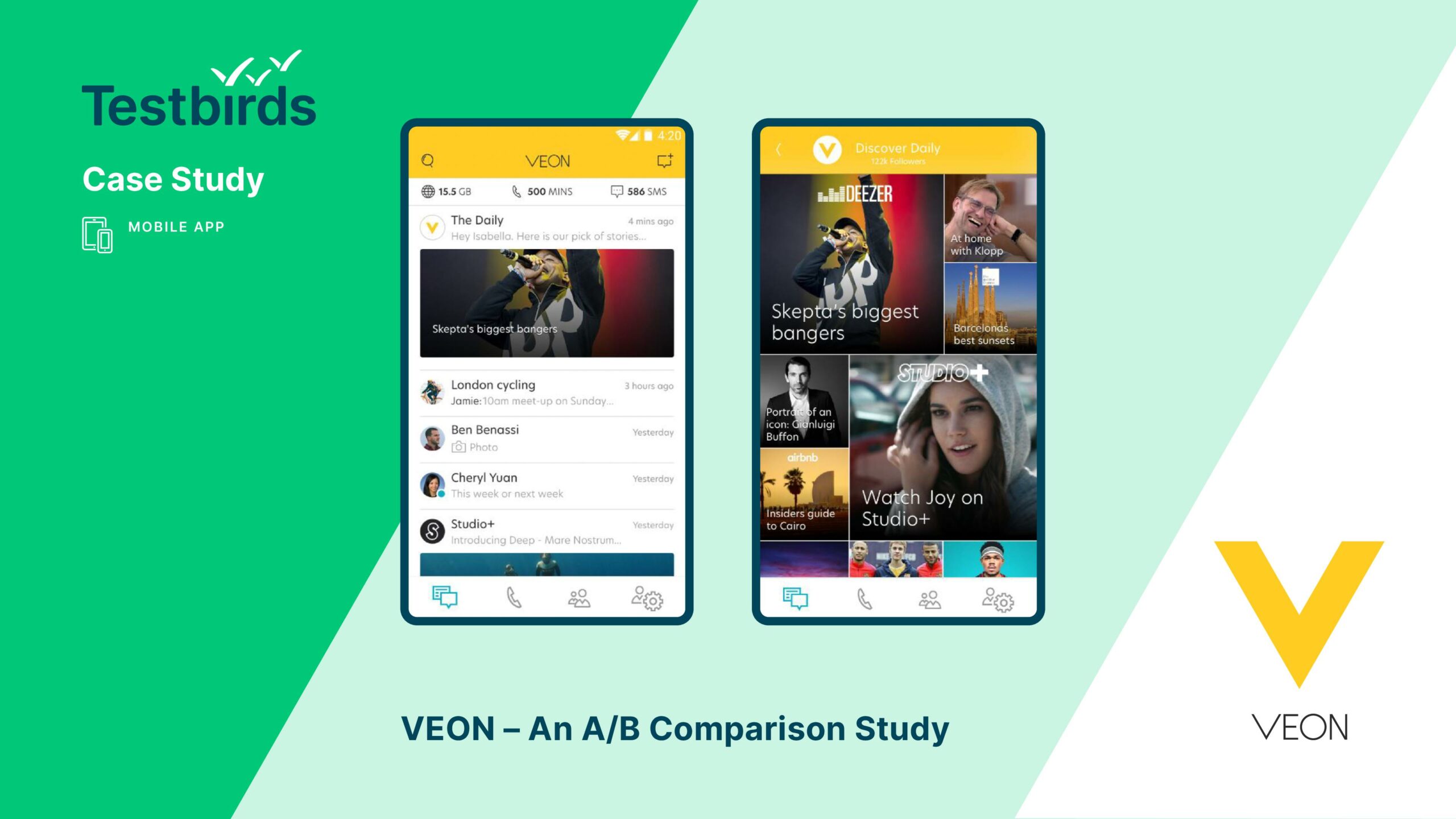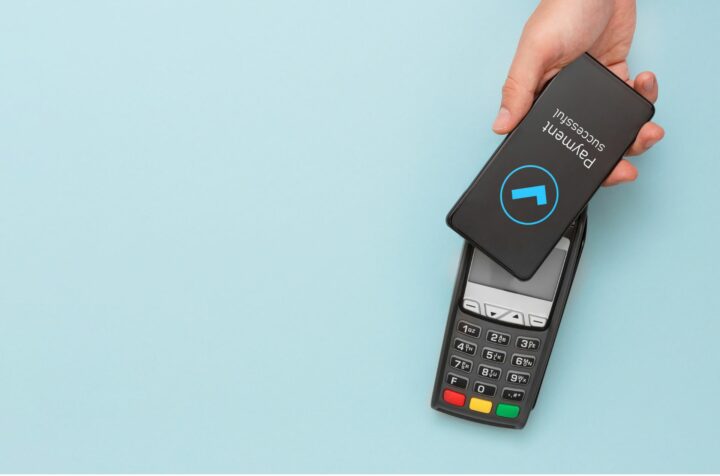In brief
Conversion Rate Optimization (CRO) is an ongoing process to systematically improve and refine your website based on each visitor’s behavior while they’re on your site.
Keep reading to find out all about these and much more – including working out your conversion rates, seeing what tools are the best to use, and discovering how others have found success through CRO.
Some key takeawaysThe importance of CRO: Not only does CRO improve the usability of your site, but it provides deep insights into your customer’s needs and expectations, which helps you to see what isn’t working, to refine those areas, and develop ways to encourage them to do what you want – fill in a form, download a whitepaper, make a purchase, or share on social media, etc. All to make a conversion.
CROs main elements: Six elements must be considered for an effective CRO strategy, the overall design of your site, its performance, structure, the text on each page, your call-to-action(s), and the forms you use to collect visitor information and gain leads.
The CRO process: After you’ve collected your data on what visitors are doing on your page and defined your metrics, you can start refining your site, which means looking at four distinct processes – doing your research and analysis, forming questions, building hypothesis, reviewing your changes with A/B and multivariate tests, and implementing your changes and practicing continual improvement.
CRO best practices: A successful CRO program doesn’t happen overnight and that means you need to invest time, money, and resources. To maximize this investment, you need to be realistic in what you want to (and can) achieve, use data and not a personal hunch to make decisions, work hard to understand your customers, and continually analyze what worked and what didn’t.
Show lessWhat is Conversion Rate Optimization (CRO)?
When you think of websites and optimization, did you think of SEO?
It wouldn’t be a surprise. It’s a big part of building a website, online shop, or platform, and for marketers, it’s an essential tool. Good SEO means people can find you and the better your search engine optimization, the higher you rank on the results page.
This matters because the top three results account for over 50% of click-throughs and higher rankings are essential if you want traffic.
But SEO is only part of the battle (we’ll assume you’re in the top three). Once someone is on your site, are they doing what you want – such as purchasing, subscribing, contacting, or downloading?
Can they also do what they want on each of your landing pages? Or is your user interface getting in the way? Are they about to become customers, or about to look somewhere else?
You need to make sure they take the actions you want them to – and that it’s easy for them to do so.
But it’s a big challenge. Conversion rates vary a great deal between industries, with some doing much better than others. Ruler Analytics research shows that Professional Services do best at 9.3%, Healthcare and Industrial come second at 5.6%, and B2B Tech and Real Estate tie last at 1.7%. The overall average for all industries covered was 3.9%.
Conversely, in Unbounce’s 2021 Conversion Benchmark Report, it was Catering and Restaurants that came out on top with 9.8%, followed by Media & Entertainment at 7.9%. Medical Services was 3.6% and Real Estate 2.6%.
Conversion statistics clearly vary, which is why it’s best to develop your own metrics (more on this later) and determine what is a successful conversion rate for you.
As more people go online and traffic increases, competition is quickly increasing, and they all want their visitors to convert into customers – but it’s those who can create a consistently positive customer experience who are successful and this is where conversion rate optimization enters the game. If you want to gain more business and create loyal customers, it’s essential.
Testing Online Shops
Optimize your conversion rates by improving your digital customer experience.
Find out moreCRO is an ongoing process to improve the number of conversions made on your site and they can be any action that you want the visitor to take, depending on your goals and what your business offers.
If visitors to your website and landing pages do what you want them to, you’ve made a conversion. For an online retailer that could mean adding something to a basket or sharing it on social media, or for a banking or financial services site to fill in a form or rate their services.
CRO is all about optimizing the customer experience to make the most of your existing traffic. Unlike SEO and paid ads, which are about helping people find you, CRO focuses on providing value that encourages conversions, develops leads, and delivers a competitive advantage once a visitor is on your page.
That means optimizing user interfaces, developing relevant content, ensuring CTAs are clear, forms are streamlined, and that visitor behavior is tracked and recorded. If it can encourage conversions, it’s worth looking at!
From customer experience (CX) to total experience (TX)From customer experience (CX) to total experience (TX)
Sometimes it’s worth looking beyond just one experience to develop a winning solution. A comprehensive and interlinked approach can bring a greater focus to the problem at hand and provide benefits to your entire business.
Called a Total Experience, the TX is a combination of the user experience (UX), customer experience, employee experience (EX), and the multi-experience (MX). The CX and EX encompass the question of ‘why’. Why do customers want to engage, why do they stop, and why are employees unmotivated? The UX and MX are all about ‘how’ and ‘what’. How can we optimize our call to action? What platform is best to reach our customers?
Looking at each experience, the data it contains, and how they all link together, can help you to better understand what is needed to drive conversions (and improve your employees’ work lives). To see both the digital and non-digital needs of employees and customers.
Imagine you’re running a car rental:
- CX: If your customers visit your site (or app) to book a car, does it give them the option to ask for extras?
- EX: Does your AI-driven online help free up your employees to fit out the car?
- MX: Can customers interact with you via different platforms depending on their needs at that moment?
- UX: Are you able to provide a seamless and frictionless experience if they have additional requests or need to utilize a third-party service?
The more everything connects, the more we need to see how every individual connection affects another and understand how each connection benefits the whole. A superior shared experience is a benefit to everyone.
Show lessWhy is conversion rate optimization so important for your business?
A solid, well thought-out, CRO strategy can deliver multiple benefits including more sales, better marketing return-on-investment, lower cost-per-lead, increased customer lifetime value, and improved user experience/satisfaction.
Without CRO, a customer can leave your site without you ever understanding why, and that’s not good for business.
With an optimized site that undergoes constant testing, analysis, and improvement, CRO helps you create a winning customer experience that boosts your web conversion rate, and ensures people stay longer, come back, and even promote your site.
The better the experience the bigger the benefit.
Just as Forrester research noted.Just as Forrester research noted. There are three types of relationships between the customer experience and revenue. To do well, aim for the top:
- “Linear. CX and revenue move in lockstep. Whether you improve a poor experience, a mediocre experience, or a good experience, the impact on revenue will be the same.
- Diminishing returns. Revenue potential increases sharply when poor experiences are improved, but it tapers off at higher levels of CX. Fixing poor experiences will have a bigger impact on revenue than optimizing good experiences.
- Exponential. Revenue potential remains relatively flat when poor experiences are improved, but it begins to increase dramatically at higher levels of CX. Making good experiences great will lead to larger revenue gains than making poor experiences OK.”
For exponential revenue growth, website conversion rate optimization is essential. Just consider the alternatives.
What will gaining 10,000 more visitors cost you? Will you need to add products (another cost)? Or is converting your existing visitors into customers the easiest, less costly, solution?
Show lessWhat are the 6 primary elements of conversion optimization?
An optimal site encourages visitors to do what you want, and this requires six elements that are essential for web conversion optimization.
1. Design
When it comes to your landing page, the old saying that ‘looks don’t matter’ definitely doesn’t apply. Aesthetics are as important as its usability because if it appeals, you’ll gain more traction and interest, but it must also be functional and meet the needs of your audience.
Each important detail must be clear and visible with unnecessary distractions removed and all sections in a logical structure. Writing must be to-the-point and understandable with benefits highlighted, colors should be selected to generate the right emotions alongside images that drive interest, and all seamlessly working on a comprehensive number of screen sizes and devices.
2. Speed
A site’s performance is exponentially impacted by its loading speed. Not only does a fast site see fewer visitors bounce, but it increases search page rankings. Research shows that for every second a site loads faster, conversion rates improve by up to 17%.
Speed must be a priority, and that means enabling image compression, keeping redirects to a minimum, using Accelerated Mobile Pages, setting up browser caching, minimizing your HTML, and lowering your server response times. It’s also good practice to test your site on as many devices and under as many conditions as you can!
3. Structure (and navigation)
The overall structure of your site must be easy to understand and follow, with the hierarchy logical, hassle-free, and built for simple navigation.
It’s often best to follow the KISS principle of keeping everything as simple as possible. The more complex and intricate your hierarchy, the more likely it is visitors will be confused and become lost. A visitor to your site always needs to know exactly where they are and how to get somewhere, and this requires consistent and clear navigation tools on each page. To get this right, Usability and UX testing are essential.
Don’t forget your SEO!
You need to be seen and that means placing at the top of search rankings. This is especially true for any page designed to generate more conversions. To gain and maintain your high SERP rankings and traffic, several things can help:
✔️Research and use the right keywords for each page
✔️Focus on your meta title and description
✔️Consider using long-form content
✔️Avoid keyword stuffing
✔️Use pay-per-click ads (with the right keywords)
4. Copy
The words on each page should be relevant, engaging, and wherever possible, compelling so that they encourage your visitor to make a conversion. This requires copy that is extremely clear, understandable, and that highlights exactly what you are offering. Ideally, it will also use data-driven insights to directly target your audience’s needs and be short, precise, and human.
Such text is often divided into two or three elements: Headlines (one of the most essential CRO elements), sub-headlines (that highlight benefits and supports the main headline), and the body copy, which is all about explaining, answering questions, and guiding the user.
5. CTAs
As with your written content, every call to action (CTA) should be to-the-point, action-focused, provide urgency, stand out, and demonstrate what you want the visitor to do. While your overall website may have multiple CTAs, a landing page is best with between one and three to ensure less distraction and more focus.
Two of the most popular CTA methods are ‘image CTAs’ and ‘anchor-text CTAs’. Images (often a button) are hyperlinked to your offer’s page, can begin a download, or start a video. An anchor-text CTA is hyperlinked text.
CTAs also use verbs to encourage a response, such as download, share, and purchase. A/B testing at this stage increases your odds of finding the best CTA.
6. Forms
When it comes to your sales funnel, forms are crucial for lead generation and are a key touchpoint on any platform. Optimizing them improves your conversion rates and helps you acquire better quality leads.
But what is an optimal form? In general, they should be shortened, concise, clean, and simple. Too many fields, personal questions, extensive mandatory sections, complex password requirements, no one-click logins, inconsistent styles, and even an unclear privacy policy can negatively impact conversions.
What is the conversion rate optimization process?
For every website, each CRO process is going to be different. There are, however, several core elements to follow that look at the various aspects of your website and landing pages, including speed, the user interface, content, navigation, and even the overall customer journey.
It isn’t haphazardly, and inconsistently, updating or changing elements on your site. It’s a deeper, step-by-step, analytical look at your pages and what people do when they arrive. All factors should encourage visitors to make a conversion.
With that in mind, there are four process steps you must take. But first, it’s important to consider the metrics you need to use.
What metrics should you track?
To optimize your site for conversions, facts are indispensable, and gaining them requires a substantial amount of relevant and comprehensive data. But it’s mandatory if you want to intimately understand your audience’s behavior, identify problem areas on your site, and further improve what is working.
Conversion metrics enable you to see where something can be optimized, added, removed, or reworked – and should closely fit with your key performance indicators.
Two of the most important to consider are:
Micro conversions. These are all the smaller steps a user takes, such as visiting a specific page, sharing on social media, adding an item to their cart, or watching a video, which leads them towards a bigger (macro) conversion. Every micro conversion highlights a visitor’s interest in what you’re offering and lets you pinpoint areas that aren’t doing so well.
Macro conversions. This is when a visitor makes a large conversion. They purchased a product, signed up for a trial, or registered for an event. The macro-conversion represents your site’s end goal.
But wait, there’s more.But wait, there’s more.
Visitor-to-lead conversion rate. If your landing page’s goal is to convert visitors into qualified leads, this metric enables you to see which strategies are working and where they can be optimized.
Lead-to-customer conversion rate. For any sales funnel, this metric is vital to measure its performance. As the visitor has already shown interest in what you’re offering, the metric provides a clear indicator of how effective a specific page is.
CTA conversions. Here you can see the percentage of visitors that directly responded to your call to action.
Form conversions. This metric lets you see how many visitors filled in and submitted your form while also enabling you to view the elements that helped convert them.
Bounce rate. This is the percentage of visitors who viewed a single page before leaving and who (most often) did not do anything else. By counting bounce rates, you can confirm if your site engages visitors.
Scroll depth. If someone stays on your page for 5 minutes, did that mean they read your article? Or just left their browser open? To gain a deeper insight into what a visitor is doing, scroll depth analysis highlights exactly where they stopped scrolling.
Click-through rate. Every time a visitor clicks on a link that leads them to your website, you can track how well your marketing campaigns are working.
Show lessNow let’s take a closer look at each process…
Always consider the customer journey
Some of the most important research you can do is to understand the entire customer journey with you. Ideally at every touchpoint, but in the sense of CRO, on the pages (or relevant section in your digital asset) that you want to make conversions. This requires taking a close look at what they’re doing and what they interact with while on each page and asking relevant questions. Are they using menus? Which ones? Do they click on hyperlinks? If not, why not?
Are they using your search bar? Do its results help or get in the way? Are your CTAs sticky on the most relevant pages (that is, they’re always on the site for the visitor and don’t vanish if they scroll down the page)?
What is the percentage of people who visit your landing page? Do they visit other pages? Which are the most popular? This can help you decide which (one or more) has the best chance to lead to a conversion.
By knowing the journey and what is grabbing their attention or getting in their way, you can better prioritize what to look at first.
Step 1: Discover – Research and Analysis
This is where cold hard facts are used to make calculated decisions. By using your favorite analytics tools, you can uncover a range of data-led insights to improve your site and increase conversions, see what’s working and what isn’t, and gain a greater understanding of your audience’s behavior.
It is essential, however, that your site (or another digital asset) is as good as you can make it and that it has been thoroughly tested to ensure it works as intended (connectivity, speed, etc.), is free of bugs, the UX is optimized, and localization issues are dealt with. By starting with such a ‘clean slate’ it’s much easier to use analytical tools to see what your visitors are doing.
Heat maps are invaluable because they let you visualize how visitors interact with your site. Click maps pinpoint where they click on a specific page, and mouse movement maps show where they moved their mouse, which is a good indicator of what interested them.
All data can then be used to perform quantitative data analysis (which focuses on numbers-based data to see what’s happening) and qualitative data analysis (that takes a closer look at why your visitors are doing something).
Are your calls to action clear and actionable? What pages have the highest bounce rates? Are people visiting you via mobile or desktop? Is the advice given by your chatbot or virtual assistant confusing?
Analytics help to answer these, and many more, questions.
Chatbots Testing
Ensure your chatbots deliver information correctly and quickly, while behaving as naturally and human-like as possible.
Find out moreStep 2: Experiment – Questions and hypothesis
Once you’ve collected and analyzed your data, it’s time to consider what to improve or change, and this requires asking questions, setting priorities, and formulating one or more hypotheses. Once a specific hypothesis is chosen, a ‘fix’ is made, and then tested against the original page.
Everything is about experimenting to see whether your change improves your existing page, which is why A/B testing is so useful.
But first you have to recognize the problem.But first you have to recognize the problem.
After reviewing your scroll depth analysis, you can see that most visitors leave after reading the first few paragraphs of your whitepaper. This means you can analyze the data for why and develop a hypothesis that predicts what will happen after a specific change.
For example, data shows that people bounce when they’re asked to provide an email address to continue reading. You can create a hypothesis to address this:
If we remove the email requirement it will lead to more people accessing our document and this will result in more conversions.
But maybe your sales team thinks it’s more complicated than that, and (for lead generation) they want visitors to give their email. Their analysis of the data indicates that visitors don’t mind giving their email, they bounce because they’re required to create a complicated password.
This can lead to a second hypothesis.
If we offer different methods to access the document, such as linking social media accounts and simplifying the password that will lead to more lead generation, and this will result in conversions and better-quality leads.
And if things aren’t complicated enough, your marketers don’t think those are the significant issues, everyone today gives out their emails and creates passwords, it’s like second nature. They think how the whitepaper is presented just isn’t engaging enough.
A third hypothesis is asked for.
If we convert the preview text into bite-sized infographics it will lead to more interest and curiosity regarding the full details and this will result in more people happily giving their email, which results in more downloads /conversions.
This is now where the creation and experimentation begin, and that requires testing.
Show lessStep 3: Test – A/B and Multivariate
How A/B testing landed (soon-to-be) President Obama $60 million
What difference can the text on a button make and would a video do better than a static image? In 2007, as Barak Obama began his campaign to be nominated for President, these were the questions his campaign’s web developers and marketers had to consider.
Which text would work best: ‘join us now’, learn more’, sign up now’, or ‘sign up’? Would dynamic videos do better than an image of his family?
After running comparison tests, the results weren’t what they expected. Learn more was easily the most preferred copy for the CTA button. And the static image of him and his family was a clear frontrunner – when the development team was certain it would be one of the videos.
Once the testing was completed, these little, but significant, changes were made. They immediately saw a 40.6% improvement in sign-up rates. This gave them over 2.8 million new email addresses, and with average donations during the length of the campaign being $21, these new people contributed an additional $60 million to the campaign.
Not bad for changing an image and a button. But without the tests showing what their audience truly responded to, rather than what they thought they would, things could have gone differently.
Read the entire experimentOnce the experiment is set up and ready to test, the question is what test to use. Two of the most common conversion rate optimization tests are A/B tests (or split tests) and multivariate tests (or A/B/n tests).
In elementary terms, A/B website testing compares two versions of your page, the original and an updated page, and sees what happens. Ideally, this means conducting both a desktop and mobile website test. Multivariate testing takes things a step further and helps you test multiple changes or entirely new pages.
One aspect to be mindful of during testing is statistical significance, the probability that a difference in conversion rates was not caused by random chance. If your change saw a statistical significance of 90%, the improvement was likely because of the change, not a random event.
Running the test again would mean you only have a 10% chance of a different result. This does not discount randomness but means there’s less risk going with that change. The lower the statistical significance the more you need to revisit changes and keep tweaking them for better performance.
Conducting CRO tests is indispensable if you want to focus on conversion optimization for the highest possible conversion rate. By basing your hypothesis on real data and letting real people test your changes, you can immediately see what is effective, what isn’t, and what people engage with and respond to. This applies whether you’re testing a single landing page or conducting more detailed e-commerce website testing because sometimes even the smallest change can make an enormous impact.
Step 4: Learn – Implement and Evolve
When it comes to continual improvement, the research, experiments, and testing never stops; especially when you’re aiming for exponential success. CRO is a process you need to keep revisiting with fresh data, deeper analysis, and new findings.
Each new test gives you more information concerning your customers and what helps drive them to convert. Even if a favorite hypothesis wasn’t chosen, it provides numerous learning opportunities that are useful for future action and, over time, this generates incremental and ongoing improvements to your landing page.
This learning is further augmented when you combine what you learn with ongoing, consistent, and comprehensive testing, and can assist in your efforts to create a great customer experience. From Usability testing, Exploratory Bug Testing, and Customer Journey Testing, everything must be focused on a seamless experience your customers will love, because that’s what will drive conversions.
Comparison Study
A better solution to an A/B test, find out what your users prefer and most importantly – why!
Find out moreWhat is the conversion rate?
Calculating your conversion rate is straightforward. Within a set time, simply count visitors and divide them by conversions, then multiply that number by one hundred to see your conversion percentage.
For example:
125 conversions ÷ 2000 visitors x 100 = 6.25% conversion rate.
What’s an excellent rate?
The higher the better. According to digital marketing agency, WebFX, a rate above 10 percent is a ‘good’ rate, although few achieve anything that high. Realistically, anything above 2% is a win.
Where your site is active, what industry you’re in, what you want audiences to buy, use, or watch, the ads you use, and even the devices visitors use can impact conversion rates. This can be seen when looking at the different percentages per industry.
Conversion rate averages
In the second quarter of 2022, Statista research found that:
“Online conversion rates of e-commerce sites were the highest in food and beverage sector, at four percent in 2022. E-commerce sites selling haircare products followed in the conversions’ ranking. Globally, online shopping sites for skincare products could reach 3.1 percent of conversion rate, on average.”
The lowest was home furniture at 0.7% and luxury handbags at 0.9%. For all verticals, the average was 2.2%.
All of this makes it clear that finding a ‘common’ benchmark to compare against isn’t straightforward, or even necessary, because in the end, you’re competing with yourself. Once you’ve worked out what each conversion means to you and conducted a cost-benefit analysis that shows you’re on the right track, work on optimizing what you already have.
VEON - An A/B Comparison Study
What are some landing page conversion optimization strategies?
Selecting appropriate strategies starts once you know where, and what, to focus on. If your main method of collecting visitor data is a form, start there, and if you want to boost trust, focus on your social proof.
Everything should be about data collection and analysis because this is what fuels your strategies. Then, as with every change, you’ll need to test while always keeping in mind the formula conversion rate you’re after, because the higher you can get it, the better.
Here are three quick strategies to consider:
Use multi-step forms
This helps by removing the perception that you have too many fields as they’re more spread out, and it keeps people on your page longer. Ideally, even when broken up, the form should be as short and appealing as possible, with clear and relevant headlines, options, and images.
A good tip is to ask a relevant question first.
Check out this real-world example: https://convertica.org/
Focus on the fold
The ‘above the fold’ section is what visitors see first. To see more, they’ll have to start scrolling, but if the imagery and text aren’t compelling up front, will they? This makes the above-the-fold area arguably the most important part of your landing page.
It’s also one section that must be fully A/B tested. Are the headlines memorable and catchy? Are CTAs clear, engaging, and able to hook the reader? If you predominantly utilize visuals, can they instantly capture a visitor’s attention?
See how airbnb use images to give their visitors a taste of what they can experience.
Build trust with social proof
The power of complimentary reviews is massive. Whether a thumbs up, a quote, or a testimonial, it helps visitors trust your business.
Such ‘trust signals’ should be incorporated within your site’s design. Include certifications, and if various media outlets are talking about you, list them. Develop case studies, include a customer review page, and actively engage on social media and review sites.
Develop a personal and individualized ‘about us’ page and show visitors who you truly are. If you can, list businesses that use your products, follow your followers, and make everything as personalized as possible.
A good tip is to also use HTTPS.
What best practices should I follow for conversion rate optimization?
Putting together a successful CRO program takes time, effort, and resources (money and people). Finding out what works best for you is a long-term commitment that requires the right mindset. Be positive, curious, and customer-focused.
Be realistic
A significant increase in conversions takes time, and this requires setting realistic expectations and goals. CRO is an ongoing process where you learn from what didn’t work as you consider that for your next hypothesis.
Don’t make assumptions
A CRO process that unquestionably works must be based on statistical data. Intuitions, assumptions, copying competitors, and hunches are highly likely to miss the mark. It may not sound creative and innovative, but a solid hypothesis based on reliable data has a better chance of success than a guess.
Do your homework
To develop personalized content that directly appeals to your customers, you must deeply understand them. Analyze your data, conduct interviews, study how your competitors communicate with them, create user personas, engage with them via your social media platform, and always ask for feedback. The knowledge you gain can only make your messaging and offers more relevant and tempting.
Keep learning
Not every hypothesis works, and not every successful test brings in the results it predicted. If it worked or not, analyze why, and see what can be improved by asking questions and conducting a detailed analysis. What was it about the losing hypothesis/design that failed to engage visitors? While the hypothesis worked on this one page, can it be applied to others?
What else can I do to optimize conversion?What else can I do to optimize conversion?
- Assign the right amount of appropriate people to your CRO program.
- Always plan for your next test and keep running them until anything stopping a conversion is fixed.
- Focus on copy and imagery that grabs attention and drives engagement throughout your page.
- Don’t ignore basic design elements, streamline everything, and remove what gets in the way of your message and CTAs.
- Remember your micro-transactions and track them; they’re a great indicator of what people are doing on your page.
- Optimize your conversion funnel, remove what is unnecessary, and focus on personalization.
What should I look for when choosing the best CRO tools?
Whether you want to focus on research, hypothesis, experiment creations, feedback, or results analysis, there’s a CRO tool for you, from heat maps, mouse trackers, and lead capture tools.
Selecting what’s right for you means taking a close look at the features you truly need, and that are critical to meeting your business objectives. For example, can you afford it, does it require specialized implementation, is it customizable, can you receive the levels of support you need, is it secure, and deployable as you want – cloud, hybrid, on-premises?
Five of the best:
- Google Analytics. Ideal for small and medium-sized websites, it provides a free web analytics service where you can receive analytic reports, track influencers, analyze and monitor competitors, and most importantly, benefit from its engagement tracking.
- Freshmarketer. An all-in-one CRO suite, Freshmarketer helps optimize your site at every touchpoint with campaign analytics that provides insights on opens, responses, clicks, and more. All helping to generate leads and improve engagement.
- Unbounce. Helping to streamline the landing page building process, Unbounce is a cloud-based platform that provides powerful creation and optimization features, including includes AI-driven tools to boost your customers’ experience.
- Crazy Egg. Enabling you to completely control your strategies, Crazy Egg provides scroll maps, heatmaps, and click reports that help you understand your visitor’s behavior when they’re on your site.
- Testbirds. From Comparison Testing to Bug Tests, Customer Journey Testing, and more, Testbirds uses crowdtesting to test your digital solutions with real people in real-world conditions and provide comprehensive, unbiased, and realistic feedback.
What are some real-world examples of conversion rate optimization?
When it comes to CRO success stories, Amazon is the most discussed. Even as far back as 2015, research from Millward-Brown Digital showed that Amazon’s conversion rate for its Prime members was a huge 74% and a very respectable 13% for non-Prime visitors. As its founder, Jeff Bezos once said, “Our success at Amazon is a function of how many experiments we do per year, per month, per week, per day.”
Seeing that as of August 2022, their net worth is $1.4 trillion, Amazon is clearly doing fine with paying conversions.
But there are as many success stories as there are types of conversion.
A few real-world examples of how minor changes often make a positive improvement:A few real-world examples of how minor changes often make a positive improvement:
- A maker of headphones and speakers increased sales 76.92% by changing its main headline to focus on a prime customer concern, were their headphones comfortable? They also added a new section of customer reviews talking about how well they fit.
- A SaaS company wanted to boost the rate of their initial free plan sign-ups and the rate of paid upgrades. By simplifying processes and optimizing the sign-up progress bar, they saw successful upgrades increase by 21.3%.
- A wedding shoe retailer wanted to boost conversion rates. Mobile was 0.6%, and desktop 2%, yet after using a heat map, scroll map, Google Analytics, and a heuristic analysis, they made relatively minor changes that saw their bounce rate fall by 50% and conversion rate increase nearly threefold.
Digital Thinkers Forum
Watch here as digital marketing expert Björn Radde shares how innovations in advertising, voice assistants, and social commerce will redefine the digital customer experience.
The future of conversions is the total experience
Regardless of the type of conversion you’re after, the total experience a visitor has on your website, combined with their overall interaction with your business and its employees, is an indispensable element to your success. It must show that you deeply understand their motivations, needs, and expectations – and can meet them.
The more you can demonstrate that through your messaging and offers, by being authentic and removing obstacles, the more you build trust and improve your brand’s image.
CRO is an ongoing and dynamic process. By utilizing it over the long-term, you can continually optimize your site for this purpose and know that a positive total experience will ensure better quality leads and a lot more conversions.









